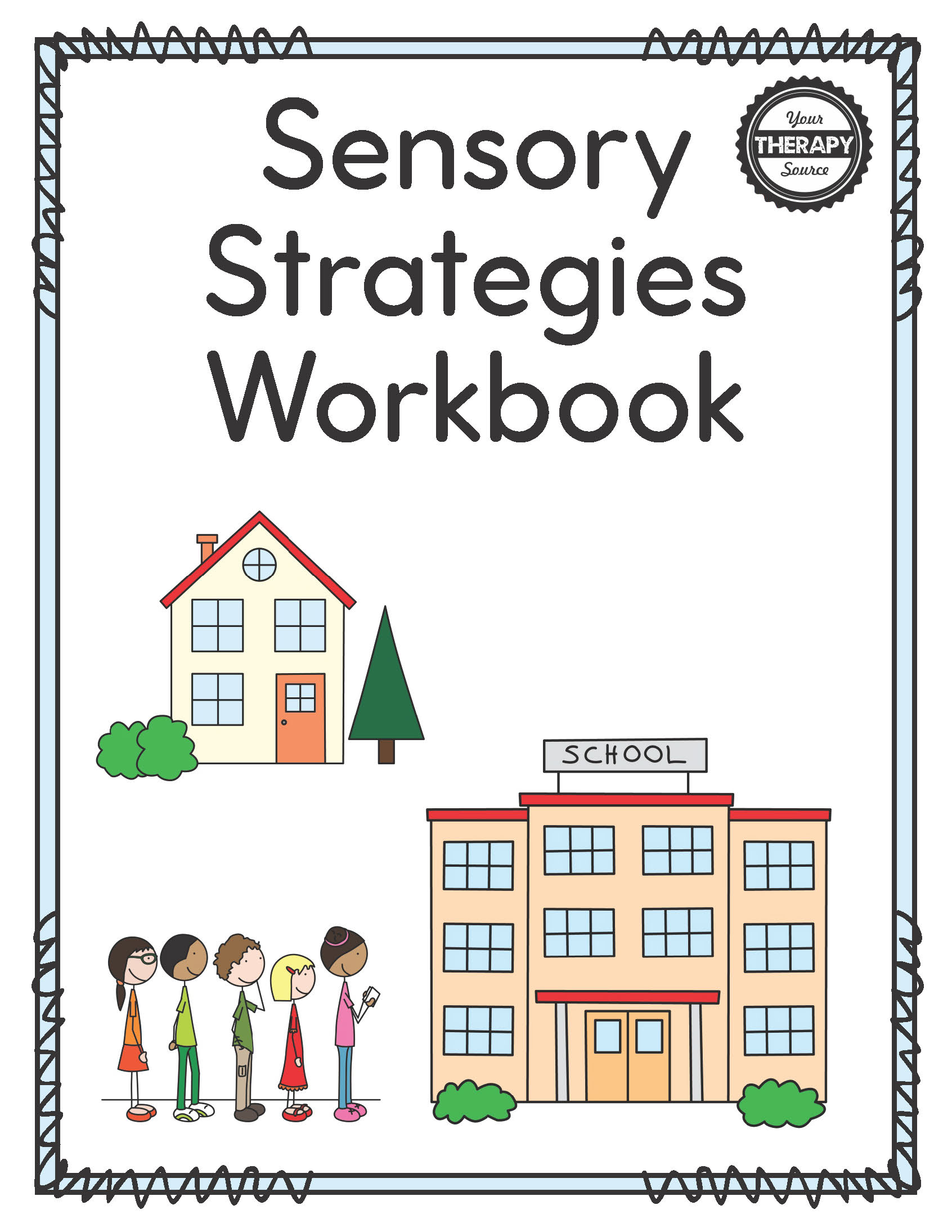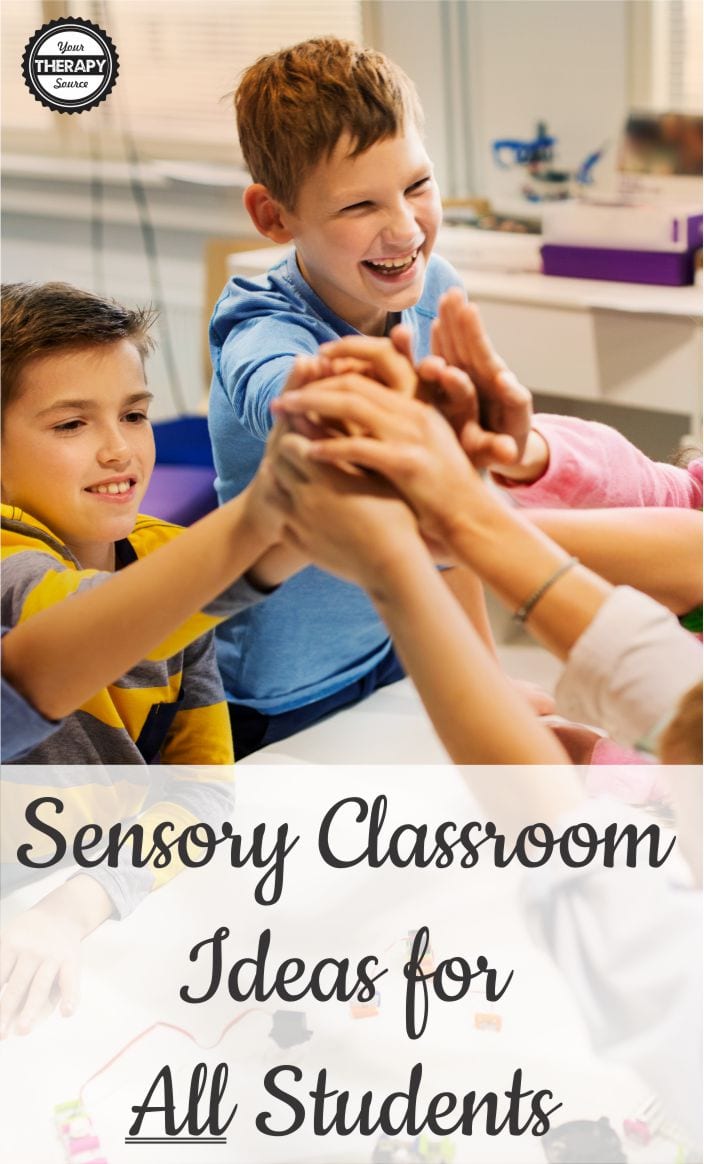Sensory Classroom Ideas for ALL Students

In today’s diverse and inclusive educational landscape, it’s essential to design classroom environments that cater to the sensory needs of all students, including those with special educational needs, sensory processing disorders, and autism spectrum disorder. A sensory-friendly classroom not only supports the academic performance and well-being of students with sensory sensitivities but also creates a more engaging and comfortable learning environment for everyone. Learn more about simple sensory classroom ideas, drawing on a wealth of resources to provide teachers, occupational therapists, and educational professionals with practical strategies to implement sensory supports and activities in their classrooms.
If you would prefer, you can listen to this article. Press play below.
Understanding Sensory Needs in the Classroom
Sensory input plays a crucial role in how all students learn and interact with their environment. For some, the typical classroom setting, with its bright lights, loud noises, and constant movement, can lead to sensory overload, affecting their ability to focus and learn. Sensory tools and activities can help manage these sensory issues, offering alternative seating, quiet spaces, and tailored sensory experiences to meet the diverse needs of students.
Acknowledging Individual Sensory Preferences
A cornerstone of creating a sensory-friendly classroom is recognizing that every student is an individual, each with unique sensory preferences and needs. It’s vital not to assume uniformity in sensory processing among students. Some may find certain textures comforting, while others may perceive the same as overwhelming. Similarly, some students might thrive in a bustling environment, whereas others require a calm space to focus. Embracing this diversity is key to fostering an inclusive and supportive educational environment.
Flexibility and adaptability are crucial in meeting these varied needs. Educators should strive to provide a welcoming and calming environment that can be adjusted as needed. This might mean having a variety of sensory tools and spaces available, allowing students to choose what works best for them at any given time. For instance, a sensory corner equipped with bean bags, soft furnishings, and sensory toys like fidget spinners can offer a safe place for students to regulate their sensory input. Meanwhile, dedicated spaces for physical activity can cater to those who benefit from movement to stay focused.

Sensory Strategies Workbook
Prevention: The Key to Sensory Success
Sensory overload can manifest differently in each student, with some becoming overly agitated, while others may withdraw. Recognizing the signs of sensory overload and understanding the sensory triggers in the classroom environment are the first steps in prevention. This understanding allows educators to tailor the classroom setting and daily routines to minimize potential sensory stressors.
Preventing sensory overload is crucial in creating a successful learning environment for all students, especially for those with sensory processing challenges. Sensory overload occurs when one or more of the body’s senses experiences overstimulation from the environment, leading to feelings of discomfort, anxiety, and inability to focus. By proactively addressing sensory needs and integrating preventative strategies into the classroom, educators can significantly reduce the incidence of sensory overload, thereby fostering a space where all students can thrive. Here are several reasons why prevention is essential and how it benefits students.
How to Create a Sensory-Friendly Classroom: Strategies and Tips
Creating a sensory-friendly classroom is about understanding and meeting the sensory needs of all students, fostering an environment that supports learning, concentration, and emotional regulation. Here are various strategies and tips to help educators and therapists build a classroom that is inclusive and accommodating to the sensory preferences of every student:
- Routines: Establish a structured routine throughout the school day so students know what to expect.
- Implement Alternative Seating Options: Use exercise balls, wobble chairs, and bean bag chairs to offer different types of sensory input and allow students to find comfortable positions that help them focus.
- Embodied cognition lessons (movement with learning): Learning styles can affect a students ability to process sensory information. Try to create lessons plans that are multi-sensory i.e. tactile, visual, auditory and kinesthetic (movement).
- Offer Choices: Everyone has sensory preferences. If someone has a very strong sensory preference, it can possibly interfere with his/her ability to learn. If possible, allow the students to make their own choices i.e. fingerpaint or paintbrushes, stand up or sit down, pencil or pen, etc.
- Create a Calming Corner: Designate a quiet area of the room with soft lighting, comfortable seating, and calming sensory tools like weighted blankets or soft music to provide a retreat for students needing a sensory break.
- Use Sensory Bins: Fill containers with rice, beans, or water beads and various objects for students to explore. Sensory bins can help with tactile exploration and fine motor skill development.
- Incorporate Visual Schedules: Visual schedules can help reduce anxiety by providing clear and predictable information about the day’s activities, supporting students who may be overwhelmed by too much sensory information.
- Offer Sensory Tools: Provide access to stress balls, fidget spinners, fidget toys, and other sensory toys that students can use discreetly at their desks to help maintain focus and manage sensory needs.
- Integrate Movement Breaks: Schedule short breaks for stretching, yoga, or simple exercises to help students release energy, improve concentration, and receive beneficial proprioceptive input.
- Adjust Lighting: Replace harsh fluorescent lights with softer lighting options, like natural light or LED lamps, to create a more visually comfortable environment for students sensitive to bright lights.
- Incorporate Quiet Time: Dedicate time for quiet activities, allowing students to engage in silent reading, drawing, or other calm tasks to help reset their sensory systems.
- Use Noise-Canceling Headphones: Make noise-canceling headphones available for students who are sensitive to loud noises or need to block out distractions to focus on their work.
- Establish Sensory Paths: Create designated areas in the classroom or school where students can engage in structured movement activities, like hopping, skipping, or wall push-ups, to receive sensory input in a controlled manner.
- Encourage Oral Sensory Activities: Provide chewable jewelry, crunchy snacks, or gum as appropriate, to satisfy oral sensory needs and help students stay focused.
- Limit Clutter and Visual Distractions: Organize the classroom to minimize clutter and visually overwhelming areas. This can help reduce feelings of overwhelm and distraction for students with sensory sensitivities.
- Try Kinesthetic Lessons: Use materials like sandpaper letters, playdough, or textured paper to engage tactile learners and support sensory integration through educational activities.
- Offer Proprioceptive Activities: Activities that involve pushing, pulling, or lifting can provide valuable proprioceptive input. Consider integrating classroom chores or exercises that engage these movements.
- Create a Safe Space for Feedback: Encourage students to communicate their sensory needs and preferences, and adjust the classroom environment accordingly. This empowers students and helps them feel understood and supported.
- Keep noise at an appropriate level: Sometimes children can be LOUD! Imagine trying to learn when the noise level is too high. By establishing reasonable noise levels in the classroom it prevents overstimulation. Students may need to be taught what appropriate noise levels are acceptable. Try using a noise meter for a visual cue.
- Recess: No matter what the weather, schools need to encourage recess time. Whether it be free
play time outdoors on playground equipment, using loose parts (ie balls, jump ropes, etc) or indoor time on rainy, cold days, students benefit from the break for some of the following reasons: self-regulation skills, sensory motor skills, mathematical concepts (spatial awareness, counting, etc), behavior improvements and physical activity time! - Clear and consistent expectations: Make sure students are educated on what your expectations are to maintain a peaceful classroom. Review classroom rules often.
- Collaborate with Specialists: Work closely with occupational therapists, physical therapists, and special education teachers to develop individualized sensory strategies for students who may need more targeted support.
By implementing these strategies, educators can create a more inclusive classroom environment that acknowledges and respects the sensory needs of all students, promoting a more conducive and effective learning space for everyone.
Sensory Strategies for Middle and High School Classrooms
As students progress through middle and high school, they face increased academic demands, social pressures, and the challenges of adolescence. For those with sensory processing challenges, the sensory-rich environment of these educational settings can be particularly overwhelming. Implementing sensory-friendly strategies in middle and high school classrooms is crucial to support these students’ academic and social-emotional development. Here are strategies and examples of sensory supports suitable for these environments:
- Advanced Sensory Tools: Offer sophisticated sensory tools that are age-appropriate for middle and high school students. Examples include ergonomic seating options, discreet fidget devices, and noise-cancelling headphones for focused work or study periods.
- Designated Quiet Zones: Create quiet areas within the classroom or school where students can take sensory breaks. These zones should be equipped with comfortable seating and low lighting, offering calming activities such as reading or sketching to help students recharge.
- Sensory-Inclusive Classroom Decor: Opt for calming colors and minimize visual clutter on walls. Incorporating elements of nature, such as plants or aquariums, and using adjustable lighting can contribute to a serene classroom atmosphere conducive to learning for all students.
- Movement Opportunities: Recognize that students benefit from physical movement throughout their day. Facilitate access to standing desks, balance cushions, and regular movement breaks, including activities like guided stretching or brief outdoor walks.
- Technology for Sensory Regulation: Leverage apps and digital resources designed for sensory regulation, such as mindfulness apps, digital sound machines, or visual relaxation aids. These can be particularly effective during transitions or as part of scheduled breaks.
- Personalized Sensory Kits: Encourage students to assemble personalized sensory kits that can be kept in their locker or desk. Include items like textured fidgets, personal headphones, and aromatherapy hand wipes.
- Sensory-Aware Physical Education: Work with physical education staff to incorporate sensory-friendly activities, such as yoga or pilates, offering alternatives to high-stimulus sports for students who are sensitive to overwhelming sensory environments.
- Academic Accommodations: Implement accommodations like providing written instructions alongside verbal explanations, using graphic organizers for complex tasks, and offering quiet spaces for exams or independent work to help reduce sensory and cognitive overload.
- Social-Emotional Learning (SEL) Practices: Integrate SEL into the curriculum to educate all students about sensory needs and self-regulation strategies. This not only supports students with sensory sensitivities but also promotes a culture of inclusivity and understanding.
- Collaborative Spaces: Design collaborative workspaces with sensory considerations in mind, such as round tables with movable seating, to facilitate group activities without overwhelming sensory input.
- Teach Self Advocacy: Teach students about self-advocacy, empowering them to understand and communicate their sensory needs to teachers and peers. This fosters independence and encourages them to take an active role in managing their sensory environment.
Implementing Sensory Supports
The creation of sensory rooms and dedicated sensory areas within classrooms is a significant step towards accommodating sensory processing challenges. These therapeutic spaces can include a variety of sensory equipment and sensory toys designed to meet individual student needs, offering a range of sensory experiences from calming visual stimuli to engaging tactile activities.
Seeking Individualized Support from Professionals
When general strategies are not enough to address the specific sensory needs of a student, seeking help from professionals such as occupational therapists, physical therapists, or speech therapists can be invaluable. These specialists can assess individual students’ needs, offering tailored advice and interventions that can make a significant difference in their school experience.
Occupational therapists, in particular, play a crucial role in supporting students with sensory processing disorders, developmental disabilities, or autism. They can provide targeted sensory integration therapy, suggest appropriate sensory tools and activities, and help create personalized sensory diets that balance sensory input throughout the day. Physical therapists can offer strategies to incorporate physical activity and movement in ways that support sensory needs, while speech therapists can assist with communication challenges that may accompany sensory processing issues.
A dedicated team approach underscores the critical role educators and specialists play in fostering sensory-friendly classrooms. By implementing thoughtful sensory strategies, collaborating with professionals, and maintaining a flexible approach to individual needs, educators can ensure that every student has the opportunity to thrive in a supportive, inclusive, and sensory-aware educational environment.
Specific Sensory Strategies for the Classroom
The Sensory Strategies for the Classroom Bundle includes 9 digital downloads to help students to be ready to learn or participate in functional tasks. Click on each link to view more information about the 9 titles:
Typical Classroom Sensory-Based Problem Behaviors & Suggested Therapeutic Interventions
Sensory Tools for the Classroom
Cut and Paste Sensory Diet for Home and School
Breathing Breaks
Classroom Activity Posters
Self-Calming Strategies
Calming Strategies for the Classroom
Calm Down Cards
Emotions Packet




